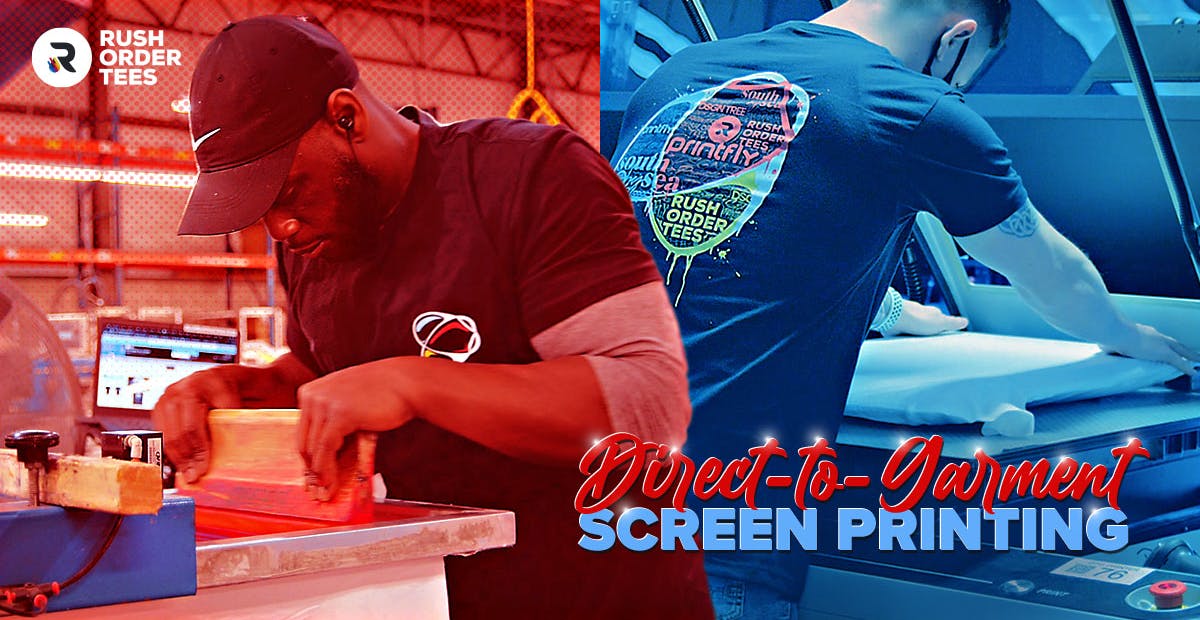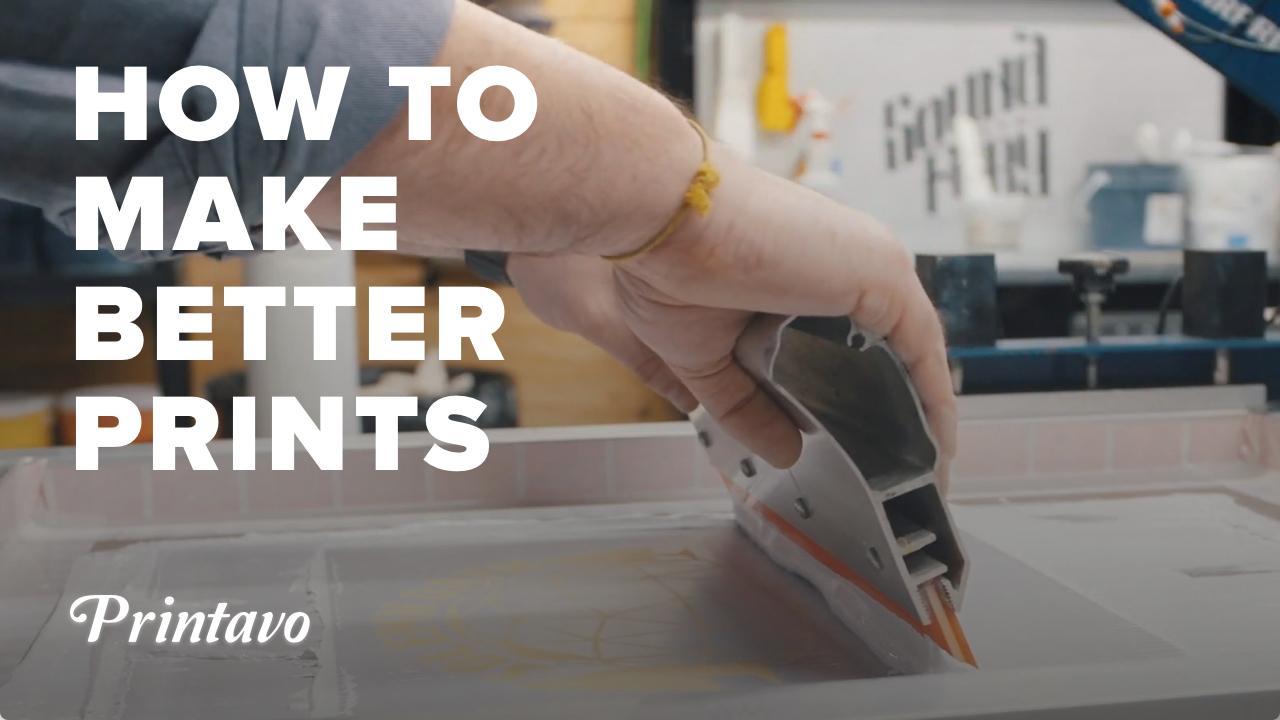Excitement About Tx Tees
Excitement About Tx Tees
Blog Article
The Single Strategy To Use For Tx Tees
Table of ContentsThe Definitive Guide to Tx Tees9 Easy Facts About Tx Tees ShownTx Tees - The FactsThe 45-Second Trick For Tx Tees5 Simple Techniques For Tx TeesThe Greatest Guide To Tx TeesHow Tx Tees can Save You Time, Stress, and Money.
Include up various other expenses, like the number of energies it takes to run the shop and the cost of ink and emulsion per design. Take the print listed below.The emulsion needs to just be a few cents considering that you 'd just require to coat one screen for this task. So exactly how much should you bill per shirt to make a revenue? Normally, printers try to make up to 45% revenue on a print work. Below's a table to help you identify that: complete price per item percent of desired profit as a decimal (example:.25 or.45) revenue made per thing per work Now allowed's discuss the success of DTF.

With DTF, you can print a handful of t-shirts, or simply one. Both display printing and DTF have their particular niches in the globe.
The Facts About Tx Tees Uncovered
The most effective way to recognize? Ask around and see what printing shop like your own are doing. t-shirt printing. Attempt both out and see which you like far better
When you're choosing what kind of printing method to utilize for printing your art work designs on your garments, it is very important that you know the differences in between these two techniques so you can maximize outcomes while reducing expenses. Screen printing is one of the most generally used technique for publishing layouts on fabrics.
DTG printing is also referred to as spot or direct to garment printing due to the fact that it publishes just what is required rather than making a screen as display printers do. https://nowewyrazy.uw.edu.pl/profil/txtees02. Display printing functions by screen filler squeegee display printing ink screen mesh display, then moving the picture to garment using warmth and/or pressure
The DTG printer makes use of special dye-sublimation inks that are used into a pre-designed photo by a digital printing system. The inks become component of the fabric, permitting for lively shades and remarkable information. It's also understood as area or direct to garment printing since it publishes only what is required as opposed to making a screen as display printers do.
Tx Tees - Truths
It's much quicker - you can publish a fullcolor image in minutes, as opposed to hours for screen printing. Second, there's no set up time or expenses included - you can publish any kind of layout you such as, without needing to produce a screen initially. Third, there's no waste - due to the fact that display printers display print one layout at once, they need to evaluate each shade independently.
The paper is really pricey and can only be used when. Once it's published on, it has actually to be discarded. - The initial purchase price is lower than the ahead of time financial investment of DTG printers- You can publish multi-color layouts one display each time as opposed to having to print each shade independently like DTG printing.

Not known Factual Statements About Tx Tees
However, rather of making use of find more info screen mesh as screen printers do, color sublimation printers use laser innovation to move your images onto garments or paper. A heat process transfers the dye from its solid-state straight right into the gas stage which in turn integrates it onto fabric substrates when they are swiftly heated up to high temperature levels under high pressure.
Sublimation printing is green. It uses much less water than screenprinting, and due to the fact that it doesn't include using dangerous solvents, it's safe for all kinds of clothing. The color sublimation inks are additionally odorless when treated, unlike display printers that make use of harmful chemicals during the screen printing process that leave an undesirable smell.
They additionally conserve cash on costly equipment like exposure units since dye sublimation printers don't need a UV exposure system or a flash remedy stove that is typically used in screen printing (screen printer). What is direct to garment printing (DTG Printing)? DTG printing is an electronic screenprinting procedure that prints directly onto fabric utilizing specialized inkjet printers
Fascination About Tx Tees
DTG printing provides many advantages over standard screenprinting, including the ability to publish photographic quality images, better color vibrancy, and the ability to publish designs on darker textiles. DTG printers function by heating the fabric ink until it becomes a gas. The gas then penetrates the material, bonding with the fibers to develop a long-term print.

Display printers merely prepare their display after that begin publishing up until they lack item or ink.- There is a vast array of experienced screen printers throughout the globe, which can be useful for beginners. - It's a slower process - display printers frequently have to wait for the ink to completely dry prior to they can print the next shade- Display printers need hand-operated labor, so there's a greater discovering curve and it takes longer to produce a premium layout- Display printing isn't as accurate as DTG printing, so you may obtain some "bleeding" of colors from one component of the photo onto one more if not done properly.
All about Tx Tees
Instead of utilizing display mesh as screen printers do, dye sublimation printers make use of laser innovation to move your images onto garments or paper. A warmth process transfers the color from its solid-state directly into the gas stage which in turn merges it onto textile substrates when they are swiftly heated to high temperature levels under high pressure.
Sublimation printing is green. It uses less water than screenprinting, and due to the fact that it doesn't include making use of unsafe solvents, it's safe for all sorts of garments. The dye sublimation inks are likewise unsmelling when treated, unlike display printers that make use of damaging chemicals throughout the display printing procedure that leave behind an undesirable smell.
They additionally save money on costly tools like direct exposure units considering that color sublimation printers don't need a UV direct exposure device or a flash treatment oven that is usually used in screen printing. What is direct to garment printing (DTG Printing)? DTG printing is a digital screenprinting procedure that publishes directly onto textile utilizing specialized inkjet printers.
Tx Tees for Beginners
DTG printing provides numerous benefits over conventional screenprinting, including the ability to print photo top quality photos, greater color vibrancy, and the capability to print designs on darker fabrics. DTG printers work by warming the fabric ink up until it becomes a gas. The gas after that penetrates the textile, bonding with the fibers to develop a permanent print.
Report this page